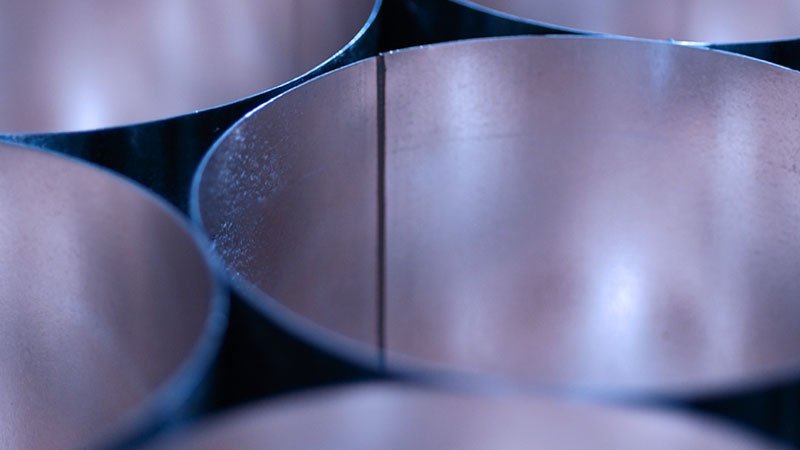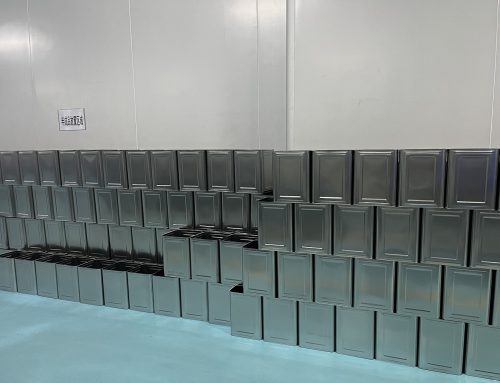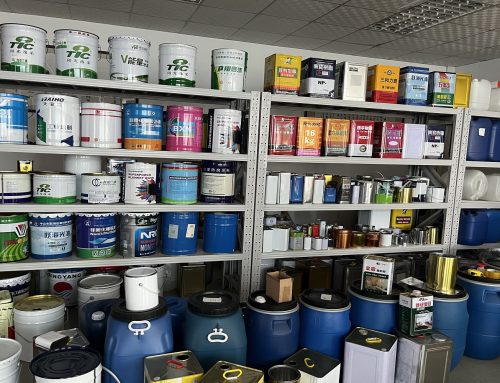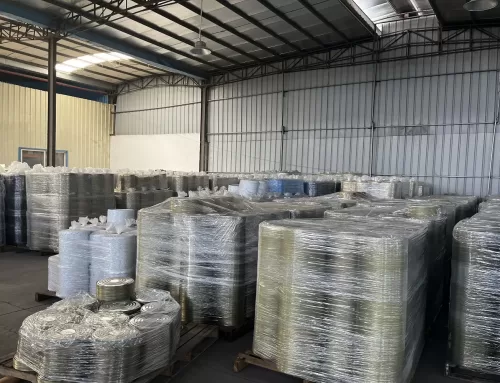How does a seam sealer work? How does the sealing machine work?
(1) Sealed form of metal container is of any two-piece can (barrel) body or three-piece can (barrel) body with the top or bottom joint, at least one or two seams (except for monolithic spray cans). The only seaming method that has been used on metal containers for more than a century is double crimping (double seam), can withstand the rigorous drop test requires the barrel to use triple crimping (triple seam). According to the different requirements of the contents, the degree of sealing after sealing can be divided into gas-tight seals (closed forms that do not leak gas at the seals), liquid-tight seals (closed forms that do not leak liquid at the seals), and tight-tight seals (where Leaking solids in closed form).
Metal containers have an irreplaceable status because they can store food for a long time, but it also has the disadvantage that it is easy to leak at the seal.
Leakage, causing the contents to become corrupt or leaked. According to statistics from the light industry department, more than 70% of the quality accidents of food cans in China are caused by sealing problems, which shows the importance of metal container sealing.
(2) The structure of double crimping
Double crimping is a combination of cans (barrels), lids and bottoms, which are connected in a five-layer holding-on.
Its structure is shown in Figure 3-1, which is composed of two-layer tank (barrel) body material, three-layer tank (barrel) top and bottom cover materials and sealant embedded between them. Hemming thickness (T), hemming width (W) in double hemming structure; undercut, body hook length (BH), cover hook length (CH), overlap length (a, overlap rate), wrinkles Indicators such as degree of tightness (compactness) are the elements that make up a double curl.
Although the basic structure of the double hemming has not changed, there are some changes in its form, such as changing the appearance of the hemming, shifting the hemming, or reducing the size of the hemming structure. The appearance of double curling is ear-shaped and rectangular. The economic sealing method is shown in Figure 3-2. The crimping is different from the common crimping. It is located at the bottom of the jar. This change in form does not change the basic structure of the double crimping, but only changes its position. As a result of this change, can lid materials can be saved by 28%. In addition, a micro-shaped crimp (mini crimping) for 206 beverage cans also changes the size of the double crimp without changing its basic structure. It meets the requirements of sealed storage of beverage cans, and also saves the lid material and sealing glue of cans.
(3) The main parts of the hemming mechanism and its function
The hemming mechanism is composed of three parts: the seaming chuck sealing rollers and the base plate. These three parts are called the three elements of the hemming and sealing. ,Indispensable.
①Sealing rollers
The sealing roller is divided into one sealing roller and two sealing rollers according to the working order. There are three forms of sealing roller:
Outer curve sealing roller, inner curve sealing roller and inner curve sealing guide.
a Outer curve sealing roller:
The sealing surface of the outer curve sealing roller is on the outer circle. This type of sealing roller is easy to process, detect and manufacture.
Low cost and easy installation and adjustment. Because the sealing roller is on the outside of the sealed tank, two or four sealing rollers can be distributed on the circumference, which can complete one and two sealing processes on one crimping mechanism at the same time. The sealing roller is equipped with a centripetal thrust bearing. During the sealing process, due to the effect of the sealing force, the sealing roller is free to rotate (slave) around the installation axis.
b.Inner curve sealing roller (rarely) The sealing curve of the inner curve sealing roller is on the inner side of the inner hole of the sealing wheel, and the optical projection method cannot be used. so processing and testing are not convenient manufacturing costs are high. At the same time, because the sealing roller covers the can lid, one and two winding processes cannot be completed on one crimping mechanism at the same time, so the machine structure is more complicated, the efficiency is lower, and the cost is higher. But the inner curve sealing wheel also has its advantages. Because the inner diameter of the inner diameter of the sealing roller is close to the diameter of the tank lid, the contact surface between the surface of the sealing roller and the tank cap during the sealing process is much larger than the outer curve sealing method, so the inner curve sealing roller, The sealing process is more reasonable and the quality will be higher.
The inner curve sealing roller is the same as the outer curve sealing roller, and is mounted on a radial thrust bearing. During the sealing process, the sealing roller is free to rotate (driven) due to the effect of the sealing force.
c. Inner curve sealing track The inner curve sealing track is the same as the inner curve sealing roller in that both adopt the inner sealing curve
It has the advantages and disadvantages of the inner curve sealing wheel. It is also different from the inner curve sealing roller: First, the inner curve sealing track is fixed (i.e., it does not have its own swivel motion). The stationary track can simplify the structure of the machine, but also because the track does not move with the tank, it is in between. Large relative sliding is unavoidable (sealing equipment must be applicable to a certain range of tank diameters.If the middle diameter of this range can be designed to minimize relative sliding, relative sliding occurs when the tank diameter changes, and it increases with the change of tank diameter. Larger and larger), this relative sliding capacity causes scratches on the curled surface; secondly, the inner diameter of the inner curved track is large, and it can accommodate several or more curling mechanisms at the same time.
② Indenter (also known as seaming chuck) The indenter is used to fix the position of the can body and the lid, so that the thickness of the seal is uniform.
Keep the seal tight. At the same time, the tapered surface of the outer circle of the indenter is 4 and its role is to cooperate with the pressure of the tray to generate sufficient friction to prevent the lid and the sealing wheel from stagnation due to the deformation of the metal seal during the sealing process or between the lid and the indenter. The depth and outer diameter of the indenter should be consistent with the indentation and can diameter of the tank cap. The indentation depth of the indenter often affects the hook width. Indenters often need to be formulated with tank lids to ensure good performance.
③Tray (or supporting chassis, lifting plate) The tray is used to support the can body, and the can body with the lid is closed to the sealing operation station, and the lid and the can body are lifted and pressed. The spring of the tray indenter will face the can. Pressure is applied to the body and the tank lid, so that the head of the tank does not occur during the sealing process.
(4) Forming process of double crimping
Double crimping is performed in two steps, which are completed by one sealing roller and two sealing rollers respectively.
As shown in Figure 3-3. First, a sealing roller is moved radially relative to the can body.The sealing force of the sealing groove of the sealing roller and the arc edge of the can lid (which may also be a straight edge) causes the outer edge of the can lid to curl normal to the groove curve. When the roller is moved to position 3, the preliminary setting of the sealing curling is completed, so that the can lid is curved along the perimeter of the can body and the flange of the can body according to requirements to bite into a certain shape and size of the initial seam. Then a sealing roller exited the winding position. At the same time, the two sealing rollers began to work, moving radially with respect to the tank, pushing the crimping which has a preliminary shape, and pressing it tightly, until the position of the second sealing wheel was completed at 5 o’clock, so that the cans and the cans The body forms a tight and tight seam. The last two sealing wheels are returned, and the sealing process is finished.
(5) Double crimping feed motion While one or two sealing wheels make radial movement along the tank body, the sealing roller returns to the tank body.
The rotation movement, the combination of the two movements is called the feed movement, and the radial movement of the sealing wheel per revolution of the tank is called the feed quantity. There are two forms of slewing motion: one is that the can body rotates and the sealing roller does not move; the other is that the can body does not rotate, and the sealing roller rotates around the can body. These two different movement methods have the same effect on the sealing process. During the process of hemming and sealing, the metal of the can body involved in the hemming was stretched and compressed. In order to meet the requirements of the quality of the sealing and crimping, the crimping process should uniformly deform the metal material, and the amount of deformation in the unit time is not too large, that is, the sealing roller along the diameter of the tank during the rotation of the sealing roller around the tank. The feed amount in the direction is uniform and cannot exceed a certain limit. The feed amount is small, the sealing quality is good, but it will reduce the production capacity of the equipment; the large feed amount, the equipment production capacity is increased, but the sealing quality is reduced. Generally, the feeding motion of one sealing roller of the can sealing machine is completed in about three weeks when the sealing roller rotates around the tank body, and the feeding motion of the two sealing rollers is completed in two cycles of the sealing roller rotating around the tank body. At present, there are two common sealing rollers feeding methods: one is an eccentric mechanism (commonly used for tank sealing equipment without rotation of the tank body), the sealing roller is mounted on the eccentric shaft, and is driven by the planetary gear train to rotate around the tank body. Movement, during the rotation of the sealing roller around the tank body, the eccentric shaft is slowly rotated and the eccentric shaft is rotated once to complete the feeding motion of the two curls.This feeding motion is not uniform, but close to the cosine law; another One is to drive the swing arm by cam, and its movement law depends on the design of the cam. In addition to the complicated movement wheel of the starting point of the cam, the middle working section can be designed to move at a constant speed, ignoring the slight difference between the swing arm and linear motion. The entrance mode of the sealing roller of the cam-driven swing arm is relatively close to the constant speed feed motion. The more special is the orbital sealing.This can sealing machine adopts a vertical type.The can body is rotated by an indenter and a tray.A workstation has multiple such rotating can bodies that make a revolution around the workstation’s rotation center.The rotation center is relatively sealed. The arc center of the guide rail is eccentrically installed, and the eccentricity is the total stroke of the sealing feed.

How does a seam sealer work? How does the sealing machine work?




